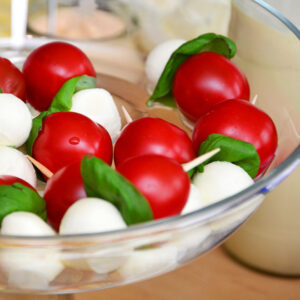Making Halloween Healthy For Your Teeth
October 29th, 2019

HALLOWEEN IS ONE OF the most highly anticipated holidays of the year, and it’s almost here! This holiday sees kids, teens, and even adults consuming far more sugar than they would any other time, coming in second only to Easter. The problem with this is that sugar is the favorite food of the harmful bacteria living in our mouths, which means eating all these treats is very bad for our oral health.
Halloween Treats Versus Our Teeth
Any time we consume sugar, that bacteria in our mouths gets a big tasty meal, after which it excretes acid onto our teeth. If you’ve ever noticed an unpleasant sour taste or gritty feeling a little while after eating dessert, that’s why. The acid can do a lot of damage to our tooth enamel, because even though enamel is the hardest substance in our entire bodies, it is very vulnerable to acid erosion.
Fight Back Against The Sugar Attack
We can, of course, do things to minimize the harmful effects of sugar on our teeth. If we eat small amounts of candy throughout the day, then we aren’t giving our saliva time to neutralize the acids and wash away the sugar, so it’s actually better for our teeth to eat all the candy we want in one go.
Drinking water can help get rid of leftover sugars after eating a treat, and there are also other foods that work as natural cleaners and oral health boosters. Apples, bananas, vegetables, and even dark chocolate help scrub teeth clean and also supply important vitamins and minerals such as calcium, phosphorus, and vitamins C and D!
Another essential component of the battle against enamel erosion is a good brushing and flossing habit. Just make sure to wait half an hour after eating candy to brush, so that your saliva has time to neutralize all that acid first.
5 Delicious, Healthy, And Spooky Alternatives
Just because there are ways to minimize the effects of sugar on your teeth doesn’t mean it isn’t still better to choose healthier options for your spooky treats to begin with. Here are a few of our favorite options:
- Colby Jack-o’-Lanterns. The cut-out jack-o’-lantern face in the bread and the yummy, calcium-rich cheese in the middle make this one a great, healthy snack!
- Monster Apple Bites. Apples are full of fiber and water that help clean our teeth as we eat them, so why not make your apple slices look spooky for Halloween?
- Boo-nana. This one is easy. All you need are a few chocolate chips (preferably dark chocolate) and a banana. Bananas are good for the teeth because they are loaded with potassium and magnesium, which help keep teeth and gums strong.
- Spooky Spider Eggs. Eggs are great sources of vitamin D and our teeth need it to absorb calcium in order to stay strong.
- Clementine Pumpkins. Simply peel the fruit and add a stem! Clementines have a lot of vitamin C, which promotes good gum health.
Top image by Personal Creations used under Creative Commons Attribution-Sharealike 4.0 license. Image cropped and modified from original.
The content on this blog is not intended to be a substitute for professional medical advice, diagnosis, or treatment. Always seek the advice of qualified health providers with questions you may have regarding medical conditions.





 Website Powered by Sesame 24-7™
Website Powered by Sesame 24-7™
